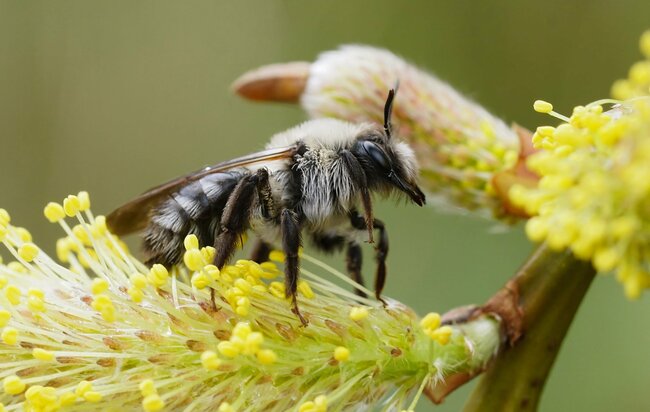Fact sheet
- Andrena vaga
- Color: white-gray
- Nests in tunnels in the sand
- Food: exclusively willow plants

Here live grey-backed mining bees
The willow sand bee is a solitary wild bee. This means that it lives without a colony of bees. Its habitat is dry, sandy soil, which is suitable for digging its nests. These nests are often found near meadows or in sunny clearings, but also in sandy pavement joints - wherever there is sufficient sunlight and food.
The large willow sand bee feeds on nectar and pollen, which it collects mainly in meadows. Meadows promote biodiversity, which increases the variety of food for wild bees and other insects. Wild bees are peaceful by nature and rarely sting. Even then, there is little cause for concern: their sting does not usually penetrate human skin.
As a pollinating insect, the willow sand bee makes a crucial contribution to the health of the ecosystem and is a valuable component of biodiversity. To support the willow sand bee, wbg Nürnberg is planting various willow species in the Langwasser Süd district. As undisturbed sandy areas are rare in inhabited areas, green roofs with sand lenses provide an ideal, quiet breeding ground for ground-nesting wild bees.

The grey-backed mining bee shares this habitat with
❕wbg Nürnberg is transforming former sandpits into new, flourishing habitats for the willow sand bee and other wildlife species.
Please do not enter these areas so that the plants can grow there undisturbed and underground passages of wild animals are not destroyed.



